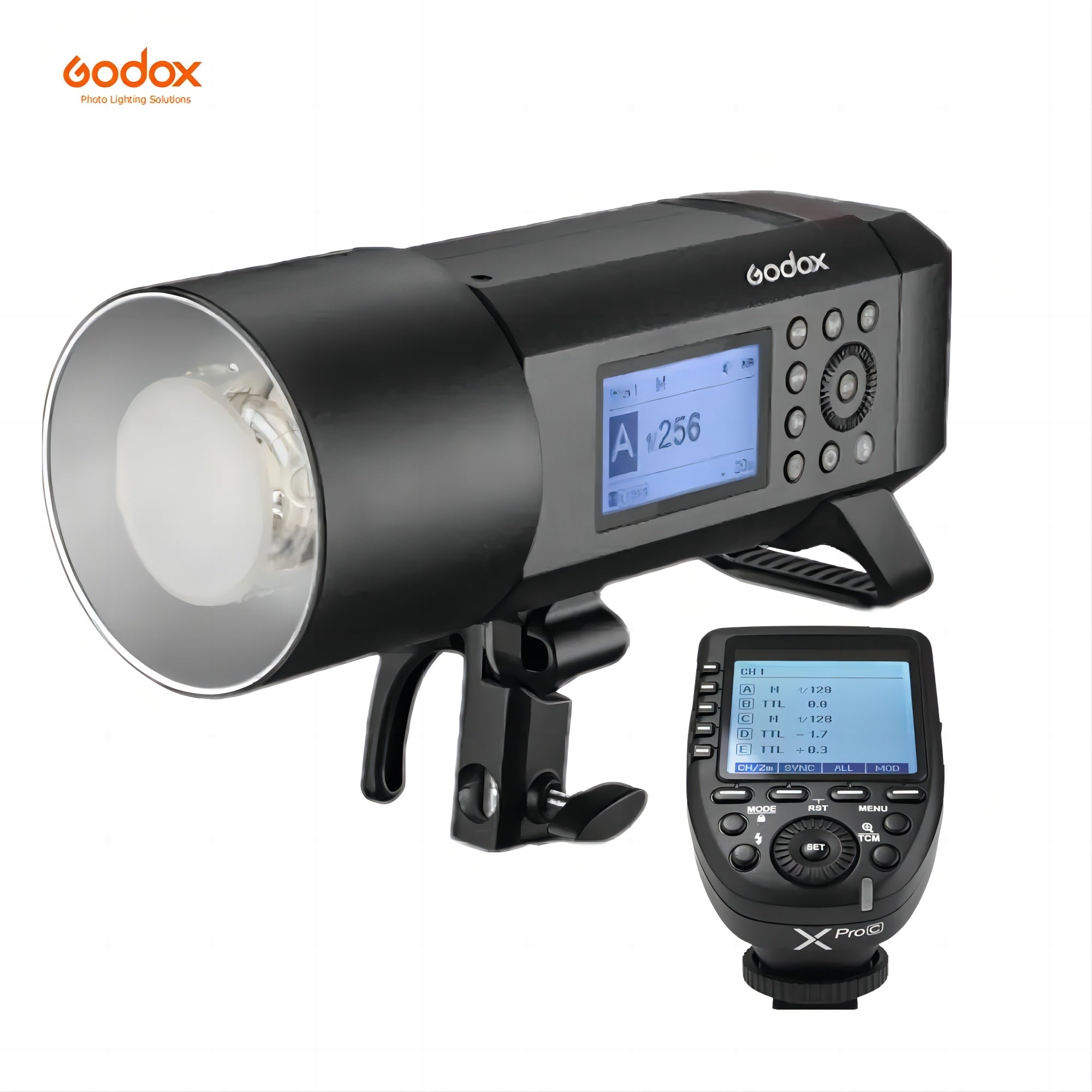The AD400pro is a battery-powered strobe with a power output of 400 watts. Our article compared the Godox AD400pro with the Godox AD200pro and the Godox AD600pro. You could read them to learn more. In practice, the main differences between the AD400pro and the AD600 Pro are the size, power output, and battery life.
The Godox AD200pro is measured 6.8 x 2.1 x 2.9 inches and weighs 590g, and the Godox AD600pro is 300g and is measured 12.75 x 9.5 x 8 inches. The Godox AD400pro is measured by 8.66x4.02x5.04 inches and weighs 210g. Therefore, the Godox AD400 is slightly lightweight compared with the camera mentioned above flashes.
But if you want a camera flash with higher power output and longer battery life, the Godox AD600pro is the best choice. Additionally, the AD400pro is suitable for extending its battery life if you use it at a lower power setting. However, 400 watts is still a powerful strobe even at its lowest power setting.
In most cases, this power output should be more than sufficient. However, if you find yourself pushing against its limits or using an AD200 or a Speedlight and feel the need for significantly more light, then the AD600 might be a better option.
It's worth noting that the AD400pro comes with a hard carrying case, which helps photographers transport and protect their equipment on the move and in the studio. Additionally, the AD400pro is priced higher than the AD200.
The AD400pro is compact enough to fit into a camera bag, whereas the AD600 requires its carrying case. However, the AD400pro may be more challenging to set up, mainly when using more significant Bowens mount modifiers. While workarounds are available, they offer a different level of perfection, smoothness, and ease than the AD600. Additionally, there is no built-in modeling light when using the AD200 with the flash head.
You can access a modeling light when using the AD200 with the Speedlight-style head. However, it should be noted that the modeling light could be more powerful, and there is limited control over its output. Nevertheless, the AD200 offers a color mode that provides more accurate color temperature, especially when adjusting from the lowest to the highest power setting. This feature is particularly beneficial in controlled shooting environments.
It's important to note that the AD400pro does not have TTL functionality. However, this won't be a significant concern in controlled shooting situations where TTL is not necessary. The modeling light on the AD400pro is brighter than the original AD600, and it offers more precise control. Unlike the original AD600, which only had three steps of brightness that offer convenient operation, the AD400pro allows for control in percentages or proportional settings.
Proportional control is handy as it visually represents your lighting setup before capturing the shot. It can become quite noisy when using the fan at higher speeds or for extended periods.
Indeed, there are several notable changes in the physical design of the AD400pro, particularly when compared to the AD600pro. One significant difference is the size, with the AD400pro being smaller than the AD600pro. The mount used to attach the flash to a light stand has also been modified.
In the AD400pro, the support features a d-click mechanism, providing a more precise and secure attachment compared to the smooth and freely moving mount of the original AD600. This combination of the d-click support and the handle on the back makes it easy to loosen and adjust the angle of the flash, offering improved convenience and control.
The AD400pro comes with a Godox mount, slightly smaller than the Bowens mount. However, there is an option to attach a semi-permanent ring that can be screwed into the mount, allowing for compatibility with Bowens mount modifiers. This versatility is valuable as a wider range of modifiers are available for the Bowens mount, and the connection between the AD400pro and Bowens modifiers becomes more solid and reliable.
The AD400pro features a Godox mount that is compatible with reflectors. It can even be separated into halves and still attach to the mount after installing the Bowens adapter ring. This flexibility is a convenient feature. For convenience, the Godox AD400pro may not be as portable as the AD200, but the carrying case makes it easy to take it with you wherever you go.
The Godox AD400pro has many excellent features and functions from the original version, such as the TTL HSS. These two functions still perform well in the Godox AD400pro.
You could use the TTL feature with Godox's TCM feature, which stands for TTL Convert-Manual. With TCM, you can first use TTL to obtain your initial exposure and then quickly transfer that setting to manual mode for further adjustments while maintaining consistency. This feature helps eliminate the slight fluctuations that can occur with TTL alone. Additionally, the AD400pro boasts fast recycle times, and the flash duration (T.1) is conveniently displayed on the screen as you change the power settings. This display feature was present in the first version and continues to be appreciated.
Regarding build quality, the AD400pro is still impressive, offering a solid and durable feel. Considering the features and performance it provides, it offers excellent value for money.
While the term "budget-friendly" can vary depending on individual budgets, the AD400pro is competitively priced compared to similar options in the market. It stands out as a well-priced option when considering its performance, build quality, and overall package.

